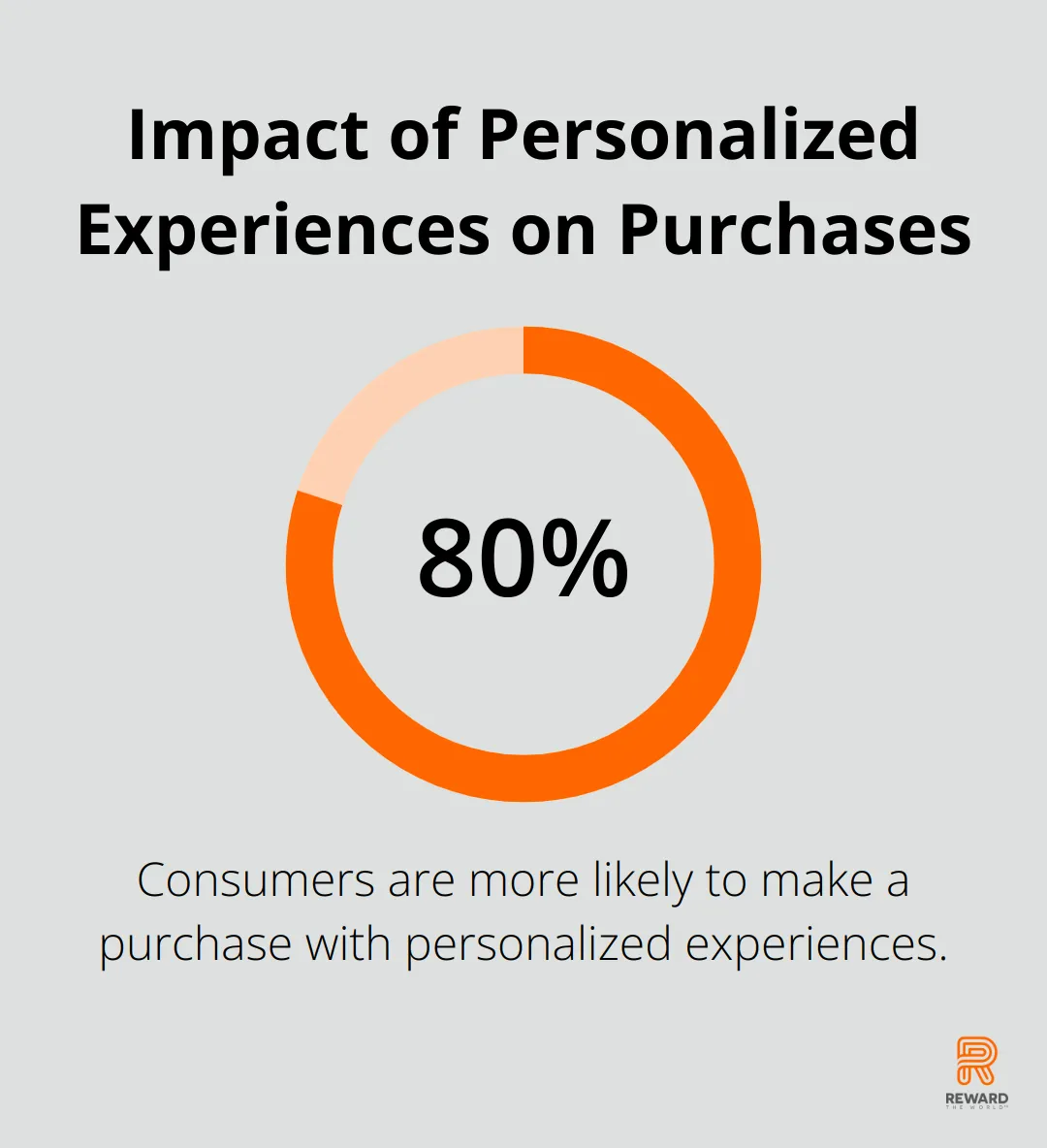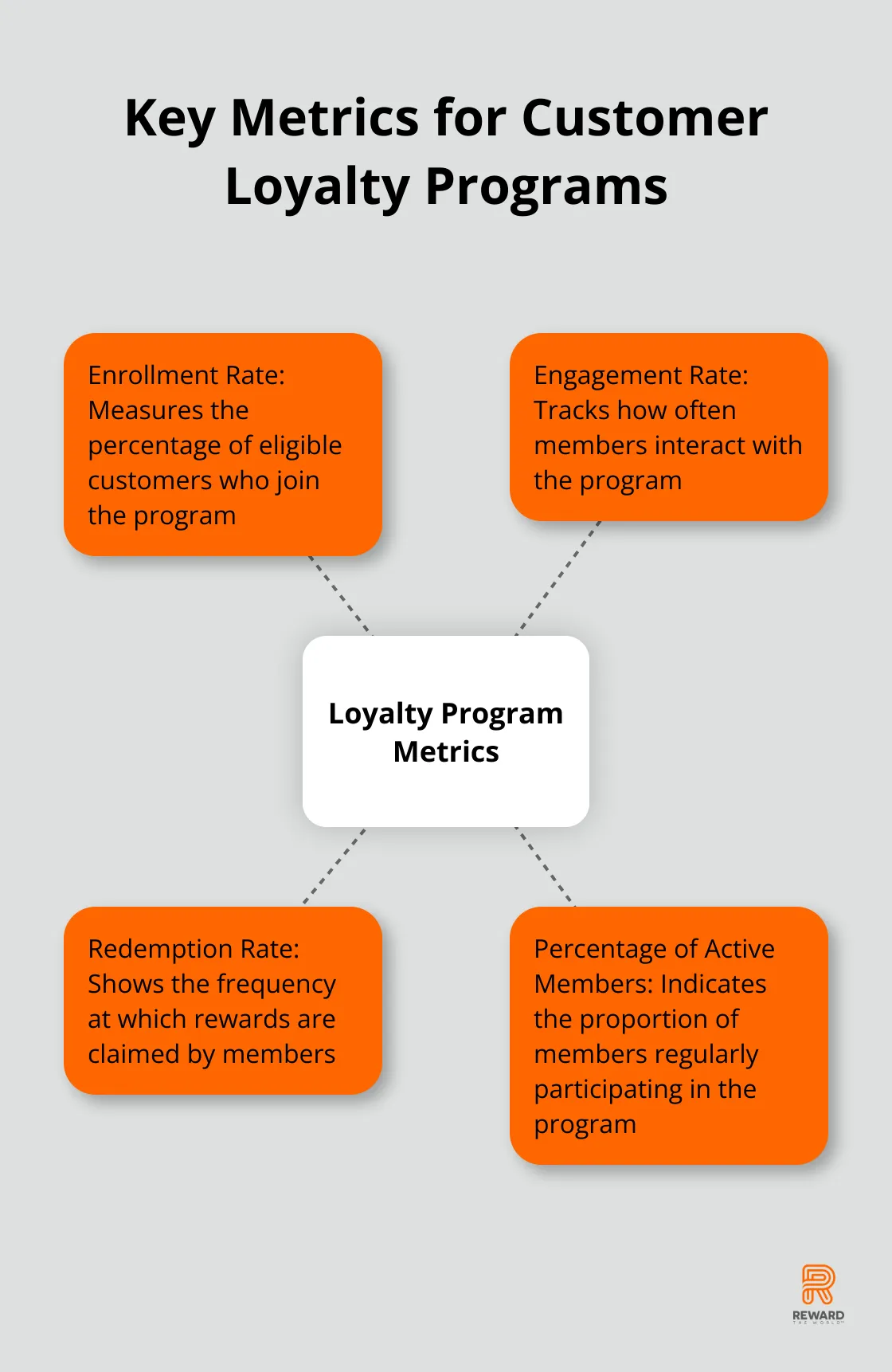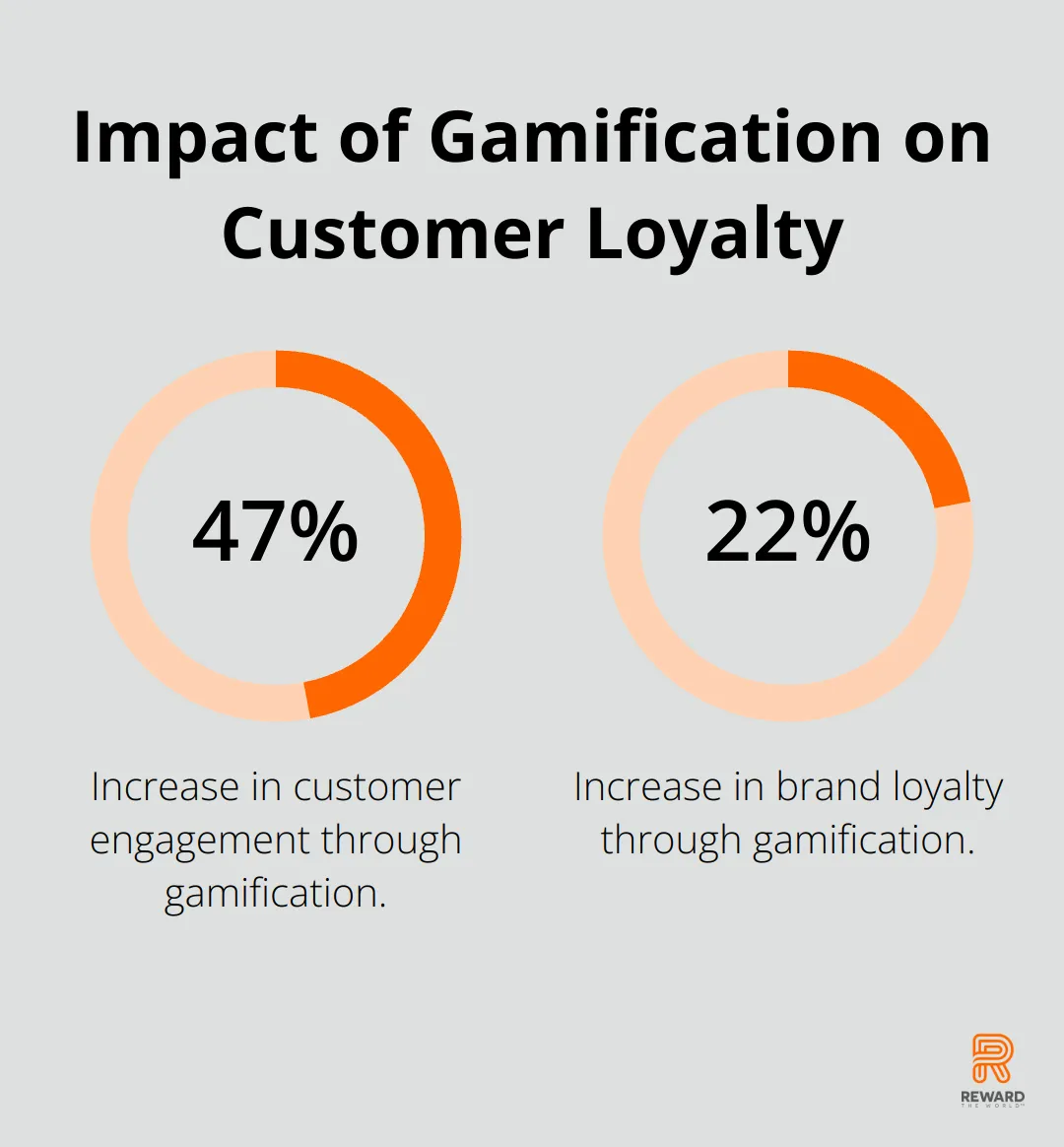
At Reward the World, we’re fascinated by the power of neuro-loyalty. This cutting-edge approach taps into the brain’s reward center to create unbreakable customer loyalty.
In this post, we’ll explore how understanding neuroscience can revolutionize your loyalty programs. Get ready to discover practical strategies that will keep your customers coming back for more.
How the Brain’s Reward System Drives Loyalty
The Power of Dopamine in Customer Loyalty
The brain’s reward system serves as a potent tool for building customer loyalty. This system motivates behavior by releasing dopamine in response to rewarding experiences. When we encounter a rewarding stimulus, our brain releases dopamine, creating a positive sensation that reinforces the behavior leading to the reward.
The Anticipation-Driven Loyalty Loop
Research reveals that dopamine release occurs not only when we receive a reward but also in anticipation of one. This anticipation creates a strong motivational drive, compelling us to repeat behaviors that previously led to rewards. For businesses, this means the promise of rewards can be as effective as the rewards themselves in fostering customer loyalty.
Personalization: Maximizing Reward Impact
The brain doesn’t perceive all rewards equally. A reward’s effectiveness depends on its personal relevance to the individual. A study by Epsilon revealed that 80% of consumers are more likely to make a purchase when brands offer personalized experiences.

The Allure of Variable Rewards
The brain’s reward system responds particularly well to unpredictable or variable rewards. This phenomenon, known as variable ratio reinforcement, explains the addictive nature of gambling. In a loyalty context, this doesn’t mean turning programs into games of chance. Instead, it suggests that varying reward types and timing can maintain customer engagement and excitement.
For example, unexpected rewards can create a sense of urgency that drives engagement.
These neuroscientific principles offer valuable insights for businesses aiming to create loyalty programs that go beyond transactional benefits. The next section will explore practical strategies for implementing these insights into your loyalty program design.
How to Maximize Reward Impact
The Power of Personalization
Personalization stands as a cornerstone for effective reward programs. Studies have shown that loyalty card programs can have a significant impact on customer behavior and satisfaction.
To implement personalization effectively, businesses should segment their customer base. Analysis of purchase history, browsing behavior, and demographic data helps create distinct customer profiles. Tailoring rewards to match each segment’s preferences and behaviors follows this analysis.
A cosmetics retailer might offer skincare samples to customers who frequently purchase moisturizers, while providing makeup tutorials to those who buy more color products. This targeted approach ensures that each customer receives rewards that resonate with their interests and needs.
Creating Exclusivity and Status
Humans seek status and exclusivity. Leveraging this psychological principle in reward programs can significantly enhance their appeal and effectiveness.
Tiered reward systems create a sense of exclusivity. The structure incentivizes customers to work on their brand loyalty to reach higher tiers and obtain better rewards. This approach motivates customers to engage more with the brand to reach higher tiers and creates a sense of achievement and status.
Offering exclusive experiences or early access to new products for loyal customers also proves effective. Companies like Amazon have successfully implemented this strategy with their Prime Early Access sales.
Timing Matters
The timing of reward delivery significantly impacts its perceived value. Immediate rewards tap into the brain’s desire for instant gratification, while delayed rewards create anticipation and long-term engagement.
A balanced approach often works best. Businesses should offer small, immediate rewards for frequent interactions, while also providing larger, aspirational rewards that require longer-term engagement. This strategy keeps customers engaged in the short term while also fostering long-term loyalty.
A coffee shop might offer a free drink after every 10 purchases (immediate reward) while also providing the opportunity to earn a high-end coffee machine after accumulating a certain number of points over a year (long-term reward).
The Role of Surprise and Delight
Unexpected rewards can create a powerful emotional response and strengthen the bond between a customer and a brand. This strategy, often called “surprise and delight,” taps into the brain’s reward center in a unique way.
Surprise rewards don’t need to be large or expensive. A small, unexpected gesture can have a significant impact. For example, a clothing retailer might send a personalized birthday card with a small discount to loyal customers. This unexpected touch can create a lasting positive impression.
Measuring and Optimizing Impact
To truly maximize reward impact, businesses must continuously measure and optimize their programs. This involves tracking key metrics such as redemption rates, customer lifetime value, and overall program engagement.
Advanced analytics tools can provide deep insights into customer behavior and program performance. Key metrics to monitor include enrollment rate, engagement rate, redemption rate, and percentage of active members. These insights allow businesses to refine their reward strategies over time, ensuring they continue to resonate with customers and drive desired behaviors.

As we move forward, let’s explore how these principles can be applied to create a neuroscience-based loyalty program that truly engages customers and drives long-term loyalty.
How to Build a Brain-Friendly Loyalty Program
At Reward the World, we’ve observed the transformative power of neuroscience-based loyalty programs on customer engagement. Let’s explore practical strategies to create a program that appeals directly to your customers’ brains.
Smart Reward Design Triggers Dopamine
Gamification in loyalty programs triggers the release of dopamine, the neurotransmitter associated with reward and motivation. Effective gamification strategies focus on immediacy and relevance. Offer instant gratifications like small discounts or points for quick redemption. A coffee shop might provide a free pastry with every fifth coffee purchase (satisfying the brain’s craving for quick wins).
Relevance is paramount. Use data analytics to tailor rewards and communications to individual preferences. A bookstore could offer personalized book recommendations or exclusive author meet-and-greets based on a customer’s reading history.
Variable Rewards Maintain Excitement
Unpredictability can significantly increase customer engagement. This unpredictability mimics the excitement of gambling and can significantly increase customer engagement.
Create a “mystery reward” system where customers spin a digital wheel after each purchase for a chance to win various prizes. This method maintains excitement and encourages repeat visits or purchases.
Gamification Elements Enhance Engagement
Gamification has been shown to increase customer engagement up to 47% and brand loyalty by 22%. Core gamified elements include point systems, challenges, badges, and more.

A fitness app might award badges for reaching step goals or maintaining workout streaks. These virtual rewards cost nothing but provide a sense of achievement that keeps users returning.
Make the rules clear and achievable. Confusion or unclear rules can quickly kill engagement. Start with simple challenges and gradually increase complexity as customers become more invested.
These neuroscience-based strategies don’t just create a loyalty program; they craft an experience that resonates with customers on a neurological level. This approach leads to deeper engagement, stronger brand loyalty, and ultimately, a more successful business.
Final Thoughts
The brain’s reward system shapes customer loyalty. Neuro-loyalty leverages dopamine to create programs that resonate deeply with customers. This approach fosters emotional connections and long-term engagement beyond traditional transactional rewards.
Personalization, exclusivity, and well-timed rewards enhance loyalty program impact. Surprise elements and gamification create powerful emotional responses, strengthening customer-brand bonds. The future of loyalty programs will integrate more advanced neuroscience principles, potentially using AI and virtual reality for immersive experiences.
We at Reward the World stand at the forefront of this neuroscience-driven approach. Our global incentives platform helps businesses create loyalty programs that truly resonate with customers. Companies that embrace these strategies will foster deeper engagement and stronger brand loyalty in an increasingly competitive marketplace.
